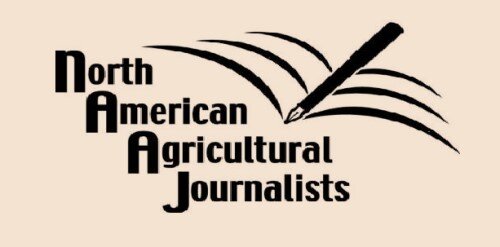NAAJ Student Winners - 2023
Student entrants must be members of NAAJ by March 1, 2023. Dues are $10/year. A brief letter or email of recommendation from a faculty member must accompany a new membership application. There are no separate contest categories for students. All entries are submitted under “Student Contest.” Stories must have been published in 2022 in a student publication or a publication that would have employees eligible for NAAJ membership.
Judge: Ed Maixner grew up on a farm and ranch in western North Dakota and devoted much of his first 20 years of news writing to agricultural coverage for North Dakota newspapers. He served as a legislative aide for agriculture, trade, and natural resources for North Dakota’s Byron Dorgan in the U.S. House and Senate in the 1990s before heading the Washington, D.C., bureau for Farm Progress News, then editing the Kiplinger Agriculture letter for a decade until formal retirement in 2014. He has since contributed stories to Agri-Pulse and other news outlets. He was president of North American Agricultural Journalists in 2011-12, and lives in Herndon, Va., with his wife, Betsy.
FIRST PLACE — Adam Goldstein | Columbia Missourian / Investigate Midwest — (Originally published by the Columbian Missourian through a partnership with the Mississippi River Basin Ag & Water Desk.)
With Corn Belt inching north, farm diversification gains momentum - 8/17/2022
Judge’s comments: Adam Goldstein has skillfully woven the Payne farming family selectively through this perspective on the possibilities and promise for diversified farming in the Midwest.
This well-crafted 2,500 (or so) words is more robust than what I’d expect from college news writing, including at the master’s degree level.
The photo at the story’s top: I must tip my hat to Jia Wu, Columbia Missourian photographer, whose iconic image of grandpa-granddaughter chatting at the back screen door of the farm house warmly sings multi-generational farm before one reads the lead.
The story has an appropriate selection of professional sources along with links to support assertions, such as climate prediction studies showing how trends in Missouri make the state a kind of bellwether for the Corn Belt’s future agricultural climate.
Very effective as a kind of wrap up near the end was the four-paragraph snapshot debate between opposing sources. It begins, “For the foreseeable future, I think corn is still the answer,” points up the need for Midwest farming to deal with changing climate, suggests how it all might play out, then ends with: “But there are also many other crops that can possibly do well in those climates. And maybe even do better …”
One little improvement I’d suggest is to provide an estimate of the share of Midwest farms that can be called diverse, rather than the 10%-15% share nationwide, since the point of the paragraph is: “these farms will become more common across the Midwest.”
More broadly, and despite respected sources, it seems the story is blind to the substantial northward shift of corn and soybeans over the past three to four decades, owing to breeding short-season varieties and other genetics, cropping technologies and equipment, along with the northward shift of the frost line over the period. (The most recent reference in crop and climate data I could find was 2009, though I know the timeliness of date in climate trend studies does tend to lag.)
Overall, a feature story very well done.

